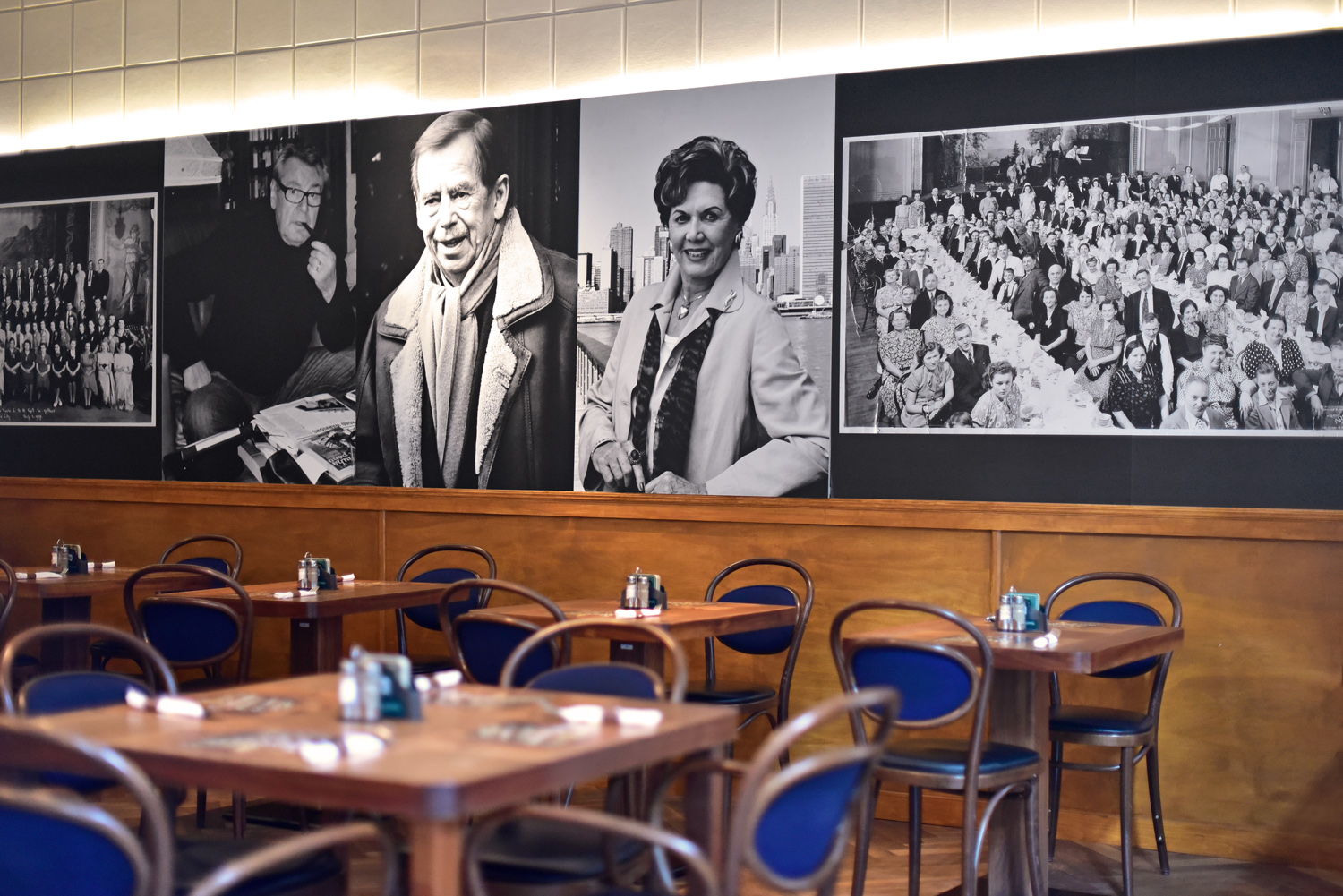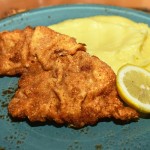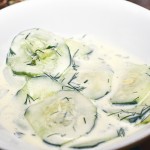A note about my restaurant reviews: New York City counts many Eastern European restaurants scattered across the five boroughs, most of them ignored by restaurant critics and diners alike. I intend to visit as many as I can and report!
Hopefully, Bohemian Spirit, on the Upper East Side, will still be open when you read these lines. This is a very legitimate concern, as the spot, located on the ground floor of the Bohemian National Hall, has been occupied by 4 consecutive restaurants in the past 5 years, 3 of them in only the past 2 years. First there was Hospoda and its haute Czech cuisine. Then came Hospoda 2, which offered more down to earth Czech grub, albeit with the same careful execution. Then there was BKB Restaurant, with the American chef who thought he could replicate the summer success of his Hamptons seafood restaurant year-round in Manhattan. And now we’re finally back to Czech food.
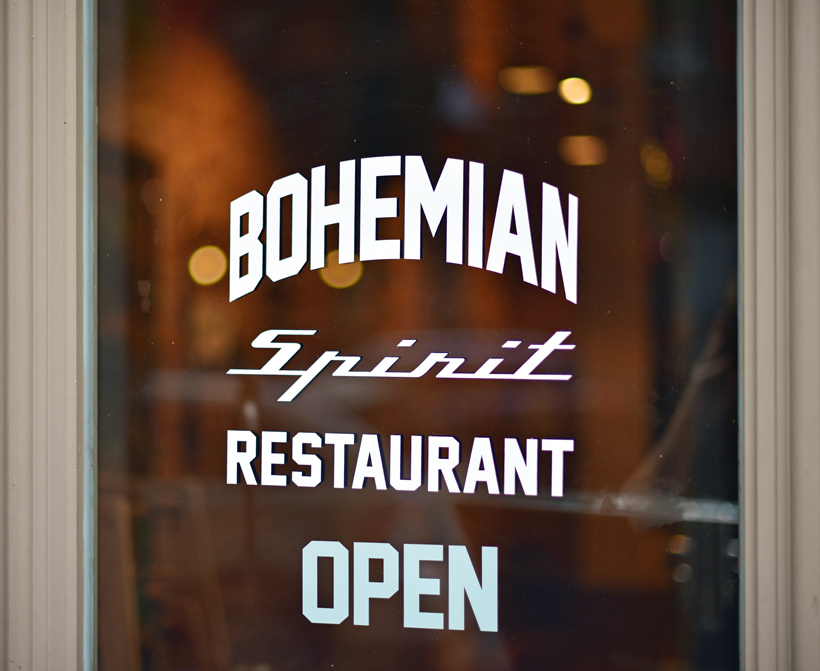
The restaurant space hasn’t significantly changed throughout its many lives. While waiting for your food (and wait you will), you can challenge your dining companions to recognize which elements of the decor and dinnerware have been carried over. The hardwood floors are Hospoda’s, but I definitely congratulate the interior designer for not taking the atrocious ceiling umbrellas out of the attic. BKB’s barely-used chairs, tables, and white cabinet are still there. I recognize some of the plates from Hospoda 2 and even Hospoda 1 — compare the schnitzel below with the one here! During its recent Long Island fling, the place also acquired bar seating (a sensible addition in a New York restaurant), and Hospoda’s beer kegs are back under the sea-through bar counter, with its too-Miami blue neon light. Even some of the chefs are recycled; in an explanation that I didn’t quite follow, I was told that the current chef used to be the pastry chef, or some other kind of chef, at Hospoda, or at BKB, or both.
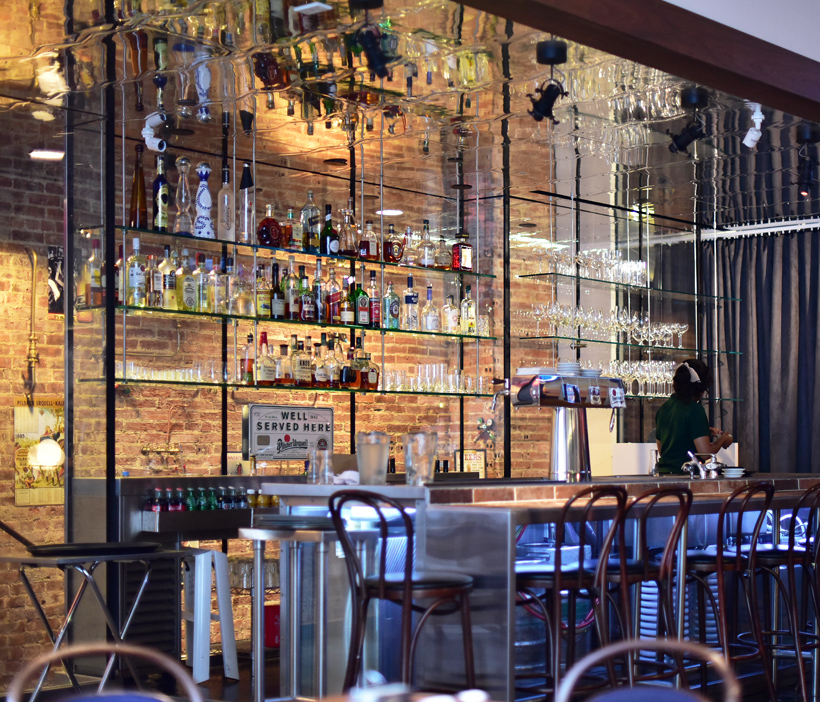
I’m not the first to review Bohemian Spirit, of course. The New York Times already published Ligaya Mishan’s review over a month ago: there are pictures of dead Czechs on the wall (Vaclav Havel, Aja Zanova); old people come out of concealed doors to speak and sing in a language Mishan doesn’t understand; the menu is cheap, the dishes déjà vu, and the service far better than it will be when you go there yourself. Mishan enjoyed the experience.
The menu, which starts with a curious, typo-laden overview of Czech cuisine more fit for a travel guidebook, includes many Czech classics: tartare, sausage, fresh vegetable salads, hearty soups, schnitzel, goulash, svíčková, duck, dumplings and pancakes of various kinds, strudel… Appetizers all cost a mere $6, and entrées range from $14 to $19.
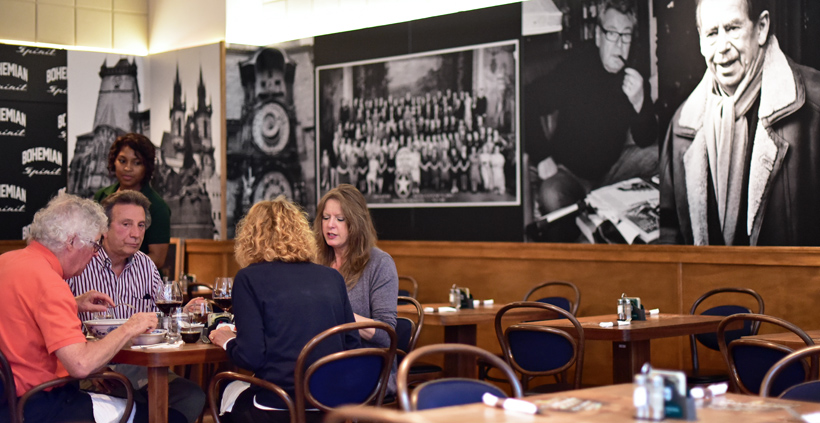
The roasted beet salad contains many things beyond roasted beets: raw tomatoes and red peppers, flavorful farmer cheese, and dill. I wish there was more of that excellent cheese, but this is a nice, simple salad.

With summer now behind us, you might prefer a soup, and the vegetable one will warm you up with its very rich taste. The soup is thickened with potatoes and full of chunks of carrots, mushrooms, and probably onions, topped with parsley. It comes with thick slices of excellent rye bread. I like it.

The beer roasted sausage is served with the same rye bread. The sausage is very good, tender inside and not too greasy, with a smoky taste. The sauce, on the other hand, is a bit of a mystery. I can’t taste beer at all, and I’m reminded of some kind of sweet barbecue sauce. What’s in it? Tomatoes and onion chunks? Probably. While I agree that a hint of sweetness would go well, here there’s simply too much, to the point where it partly masks the sausage’s flavor.
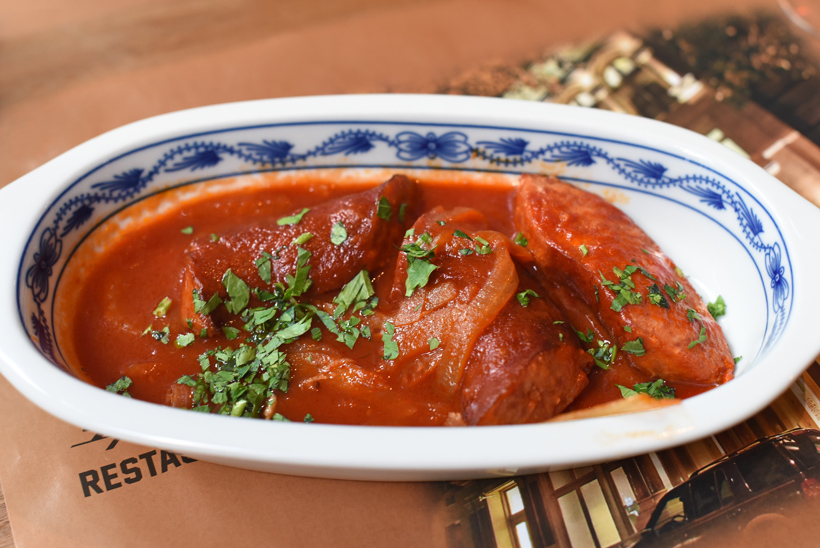
The beef tartare, which comes already prepared, is quite good. As usual, I deeply enjoy the toasted and generously greased bread slices that you rub with a raw garlic clove. The meat is mixed with chopped onions and gherkins, plus a slightly sweet condiment of unknown variety, and topped with parsley. Maybe it’s a bit too sweet, yet again, but I do like that it’s still mostly meat, not a mixture drowned in sauce. It transports me straight back to Czech Republic, as they say.
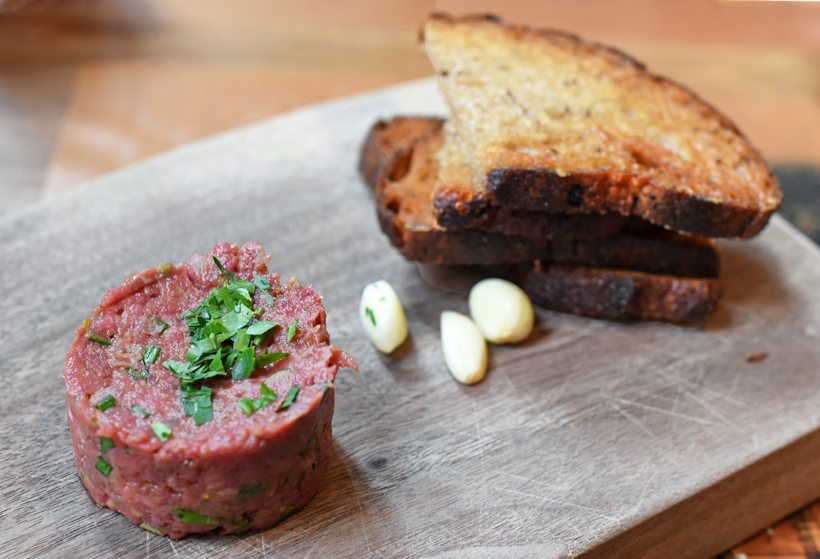
The veal schnitzel is pretty much identical to what was served at Hospoda. The pickle has been replaced by a slice of lemon; we’ve lost the double serving of meat and gained a side of cucumber salad (cucumber, sour cream, dill), which certainly makes the dish more balanced. Other than that, the meat is still thin and tender, the breading crispy and not overly thick, and the potato purée unctuous. Maybe the veal is a tad salty, but overall this is a fine, classical schnitzel.
Next up, svíčková: beef (traditionally, the tenderloin) in a root vegetable sauce. While this isn’t a dish that many foreigners know, Czechs consider it the yardstick of a cook’s skills. Bohemian Spirit opts for a slice of beef chuck cooked to perfection. As far as I can tell, it’s not cooked sous-vide like it would probably have been at Hospoda, but it’s still extremely tender, and fairly lean at the same time. The sauce is really excellent, very creamy, both slightly citrusy and slightly sweet. I can definitely taste a rich beef stock as well, but it’s hard to say exactly what else is in it. I know there’s supposed to be carrot, and I wanna say there’s orange juice (not just because of the color). On the side, four slices of bread dumpling hold the promise that you won’t leave hungry. As per usual, the dumplings don’t taste like much of anything and remind me of steamed bread, maybe with crusty pieces inside. This is way too much bread (not unusual), and I would happily trade half for another piece of beef chuck. Next to the dumplings lies one of the strangest garnishes I’ve seen in a while: dried cranberries resting on a slice of lemon and topped with whipped cream. Now, look at pictures of svíčková online, and you’ll see that this is indeed the norm. WTF, Czech Republic?! I hear that the tart cranberries and lemon are meant to complement the richness of the dish. I could dig that, except there’s already citrus in the sauce. Adding red berries or red berry preserves to a braised meat’s sauce is even a classic pairing, but keeping the berries in a corner doesn’t work as well — why not add them to the boring bread dumplings? And the sweet whipped cream, which Bohemian Spirit is using instead of the usual sour cream, is even weirder and more out of place; again, the sauce is already slightly sweet. To conclude, an otherwise excellent dish marred by too many bread dumplings and the cook dropping somebody else’s dessert on the plate.
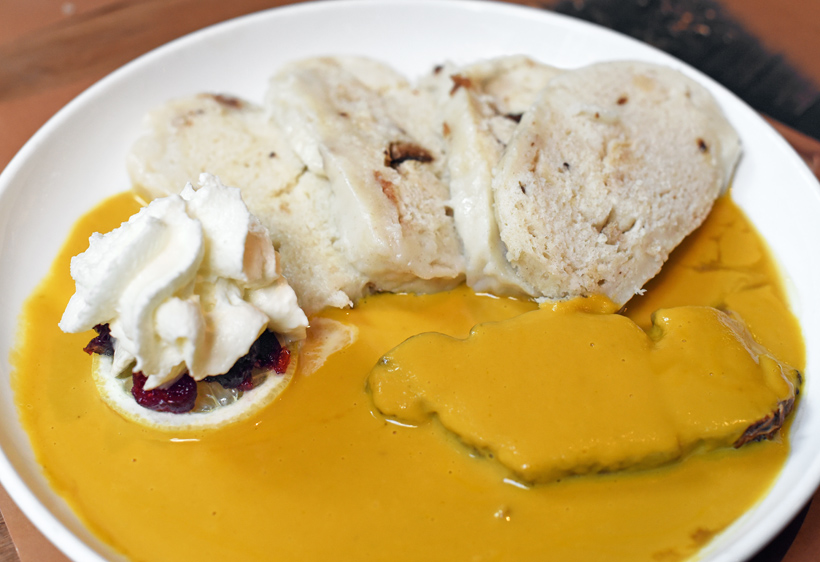
To continue with the rich wintry dishes served with enough bread dumplings for a week, here comes the beef Stroganoff. If you’re a traditionalist, look elsewhere. The only two ingredients that this dish has in common with one’s idea of a beef Stroganoff are beef and cream. I am told (after the fact) that this is a “Czech Stroganoff” — something that will resonate with only a handful of people, especially considering that even my Czech cookbooks all stick to far less bizarre renditions. I’m all for rejecting the edicts of tradition and creating better dishes — after all, we don’t even really know when and how beef Stroganoff was invented, and recipes have varied widely across eras and countries, in terms of ingredients and preparation — but Bohemian Spirit fails at creating a better dish here. The meat is fine, lean but tender beef strips neither thin nor thick, more like stewed than quickly sautéed. The bread dumplings are the usual nudniks. It’s the sauce where things go seriously wrong. Firstly, it’s very, very creamy. The waitress did warn us that some people find it too creamy, and I should have listened. Then, it’s hard to identify what it’s made of, except for the overall impression that it’s not all that pleasant. There’s not much going on, no mustard, no tomato sauce, no onion… There are a few mushy chunks here and there, which we finally identify as mushrooms and pickles. The mushrooms seem like rehydrated dried mushrooms, and the pickles remind me of overcooked squash but with a sour aftertaste. I’m not thrilled at all.
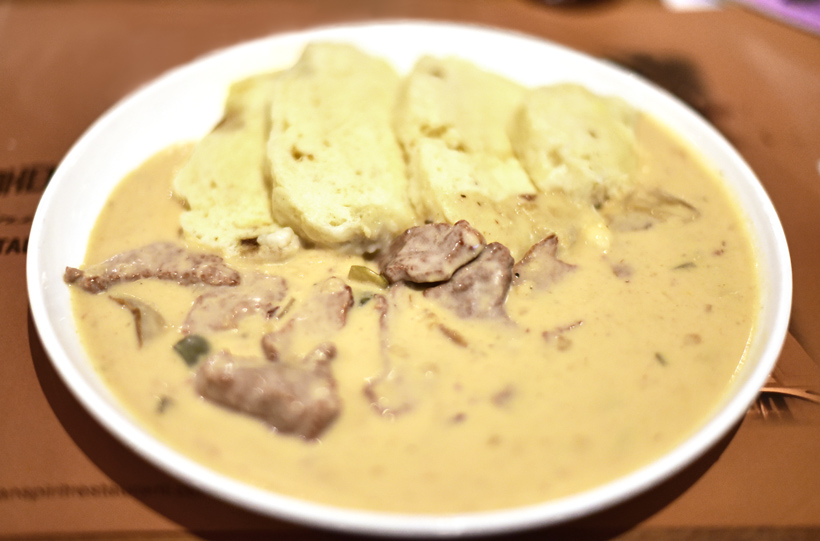
The beef goulash fares much better. It’s a canonical Czech goulash, tender chunks of meat with a sauce thicker than its Hungarian counterpart, probably made with tomatoes and onions (I don’t see any red peppers), pretty mild with just a hint of paprika. It comes with very good potato pancakes that are not made of coarsely grated potatoes, like latkes, but have a much smoother texture. They’re flavored with marjoram, and fried in a generous amount of oil.

If you haven’t stuffed yourself with bread dumplings, you might have room for dessert. There are four homemade options on the menu. The prune buns (dukátové buchtičky in Czech) with vanilla sauce are my favorite. The vanilla crème anglaise is delicious, not too sweet, very light, with intense vanilla flavor coming from all those beautiful little black dots. The buns may have been toasted a little too much on the top, but they’re still soft inside. Each of them encases a whole prune, which is really more like a dried sour plum than the usual super-sweet prunes you find in the US (not that there’s anything wrong with either version). Overall this is a well balanced dessert, and I like that it’s not too sweet.

The fruit dumplings with dark beer foam and gingerbread inexplicably cost about double the price of the other desserts. The dumplings, made with tvorog, are thick balls of dough filled with strawberries and cream. They’re quite good, if doughy. We were told that the chef always uses strawberries for this dish, whether they’re in season or not. If that’s true, then I would suggest either using seasonal fruits that don’t taste tart when they shouldn’t, or just calling the dessert “underripe strawberry dumplings”. The excellent dark beer foam is more like a beer crème anglaise that’s slightly foamy, and smells quite floral. The gingerbread crumbled on top isn’t bad, though it can easily be mistaken for any other kind of crumbled cookie. I quite like the pairing of beer with strawberries: the combination doesn’t even taste like beer, which is a good thing for someone like me whose’s not a beer drinker. Again, the whole dessert isn’t too sweet. It’s a good dish, but the prune buns are better.
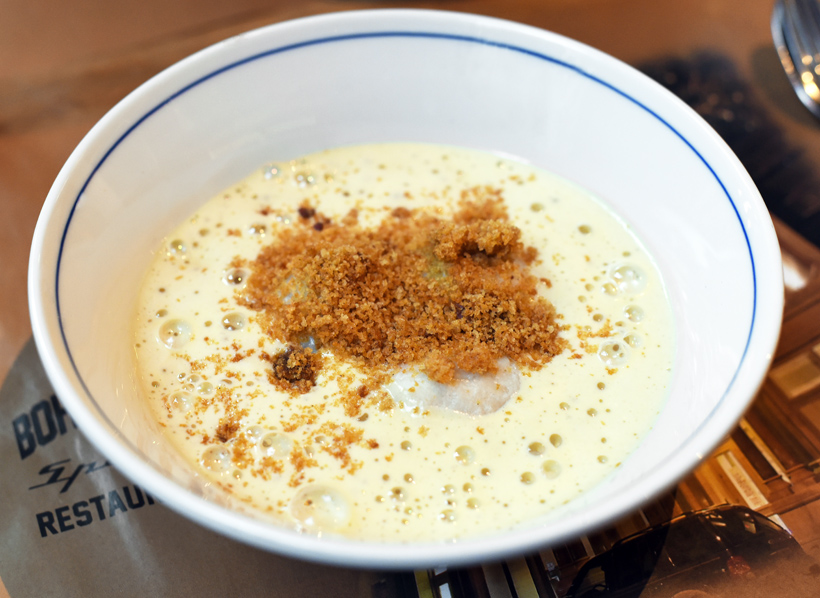
If you’re looking for something more familiar, try the apple strudel. The thin, crispy dough wraps around several layers of apples and prunes. No cinnamon, yay! Thank you! It’s served with whipped cream that could use slightly more sugar and a very average vanilla ice cream that doesn’t taste enough like vanilla and could almost be plain ice cream — a bummer after that delicious vanilla crème anglaise. Still, the strudel itself is very nice.
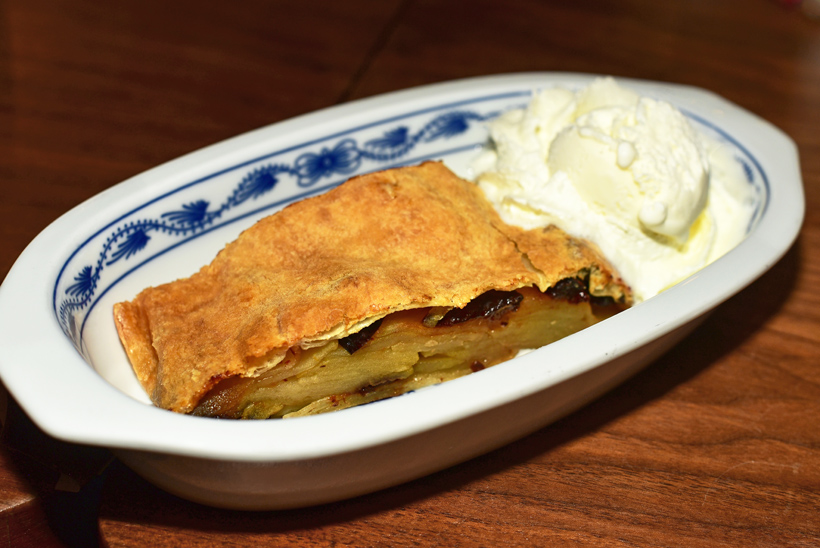
There’s a full bar, and Czech beer on tap. Wine options are very limited, although the Czech red by the glass is quite nice. And the homemade soda from Hospoda is still here.
The food at Bohemian Spirit is generally quite good, although most dishes need some small tweaks. The menu, which doesn’t seem to change much from visit to visit, also ignores seasons. During one visit on a hot summer day when it was 95 F outside, we were all eating stews, and the chef had chosen to serve beef Stroganoff as a special. I know that Czech food doesn’t really evoke grilled fish and avocado salads, but there should be some middle ground.
Then there’s the problem with service. On a visit when the restaurant was nearly empty, there was nothing to complain about. But when during another visit the restaurant was nearly full and was also hosting a private party in a side room, it became rather disastrous. Not only because the kitchen was slammed, which would be somewhat understandable, but because half of the (already few) servers working that day were totally out of it. They’re friendly, but not uniformly competent.
I regularly wonder why all of these successive restaurants at the Bohemian National Hall never thrive. The food, past all my nit-picking, is as good as or better than in many other eateries nearby that seem to be doing just fine. And I can’t imagine that the landlord charges an unreasonable rent. The service problems are definitely one big reason. There’s also been some decor faux pas in the past (the infamous ceiling umbrellas), but they’re mostly gone now (I remain dubious about the glowing beer kegs). I tend to think that the bar area is part of the problem, too. I don’t bet anybody goes there just to have a drink at the bar. Even with the new stools and tables where there didn’t used to be any bar seating, this is still not the most inviting space: there’s no on-point bartender, the lighting is too bright. Does anybody in the neighborhood even know that there’s a place that serves genuine Czech beer on tap? Shots of Becherovka? (Wait, they don’t have Becherovka on the shelves… is it in the fridge?) Given the general lack of bars on the Upper East Side, this, coupled with the affordable menu, sounds like it could be a draw. Just replace the beef Stroganoff with a hamburger — the ingredients are almost the same.
Cuisine: Czech
Picks: beef tartare, svíčková, prune buns with vanilla sauce
Avoid: beef Stroganoff
Food: 7.5/10


